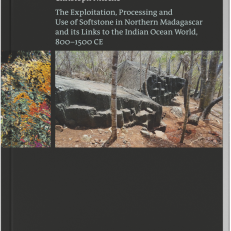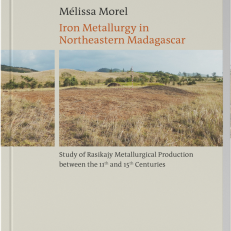Beschreibung
From the 11th to the 14th century, a population known as the Rasikajy lived along the northeastern coast of Madagascar. They developed their own smelting technique. The presence of iron slag in this area had long been attested, but no detailed study had been carried out. Between 2017 and 2021, three excavation campaigns were carried out and several test pits were dug, thus updating our knowledge of this area of Madagascar. Approximately 150 slag heaps located between Vohémar and Cape Masoala were described and documented, representing about 450 tons of slag.
All the remains are similar and are linked to a single smelting tradition based on the use of small pit furnaces dug into the sandy substratum, without any clay superstructure. Small lateritic concretions with remarkably high grades were used as ore. Short cylindrical tuyeres with a funnel-shaped perforation were used and connected to bellows. Frequently, these tuyeres were made by drilling a block of stone with a rotary tool. The Rasikajy smelting technique appears not to have derived from any other more sophisticated smelting tradition around the Indian Ocean. Rather, it seems to have independently emerged from basic smithing techniques.
The study of the slag shows a poor control of the smelting process. It appears that iron production remained a sporadic and unspecialized activity.
It is even likely that this production was insufficient to meet the local need for metal, and that they had to rely on imports through the Indian Ocean trade.










Bewertungen
Es gibt noch keine Bewertungen.